Crow Symbolism and Meaning: Mythology to Pop Culture
Crows evoke fear, hope, and amazement. Explore the robust significance of this shiny black bird.
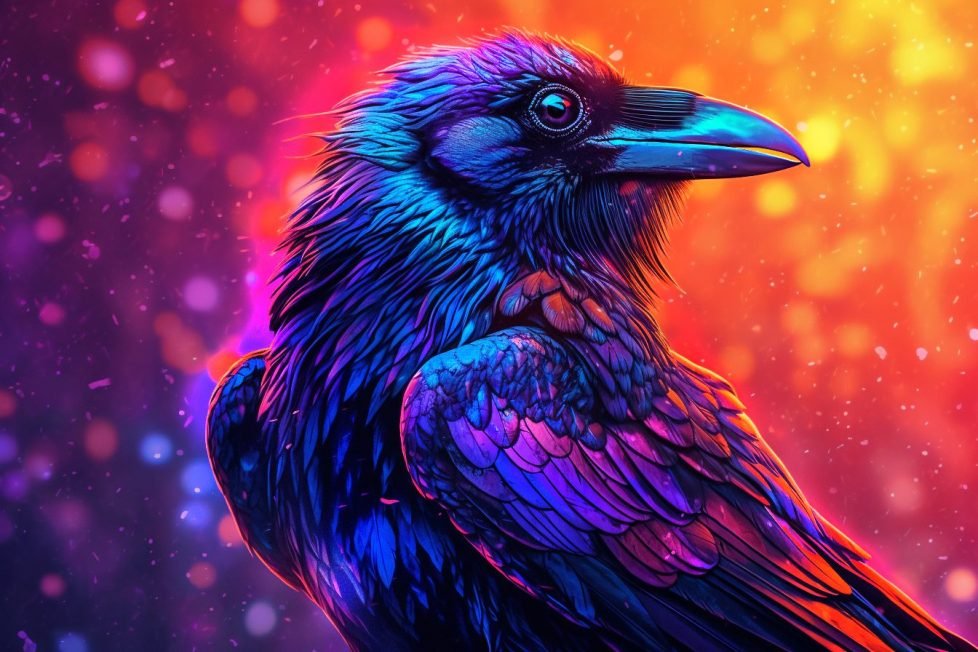
Crows evoke fear, hope, and amazement. Explore the robust significance of this shiny black bird.

Table of Contents
ToggleAcross centuries, continents, and cultures, the black bird known commonly as the crow has held spiritual meaning and evoked human emotion, often in response to seeing a crow or its close relative, the raven.
One of the first things to come to mind when looking at what crows symbolize is death.
Artwork and literature from many different places and times use the crow and raven (these terms are sometimes used and translated interchangeably) to present a warning that death is coming.
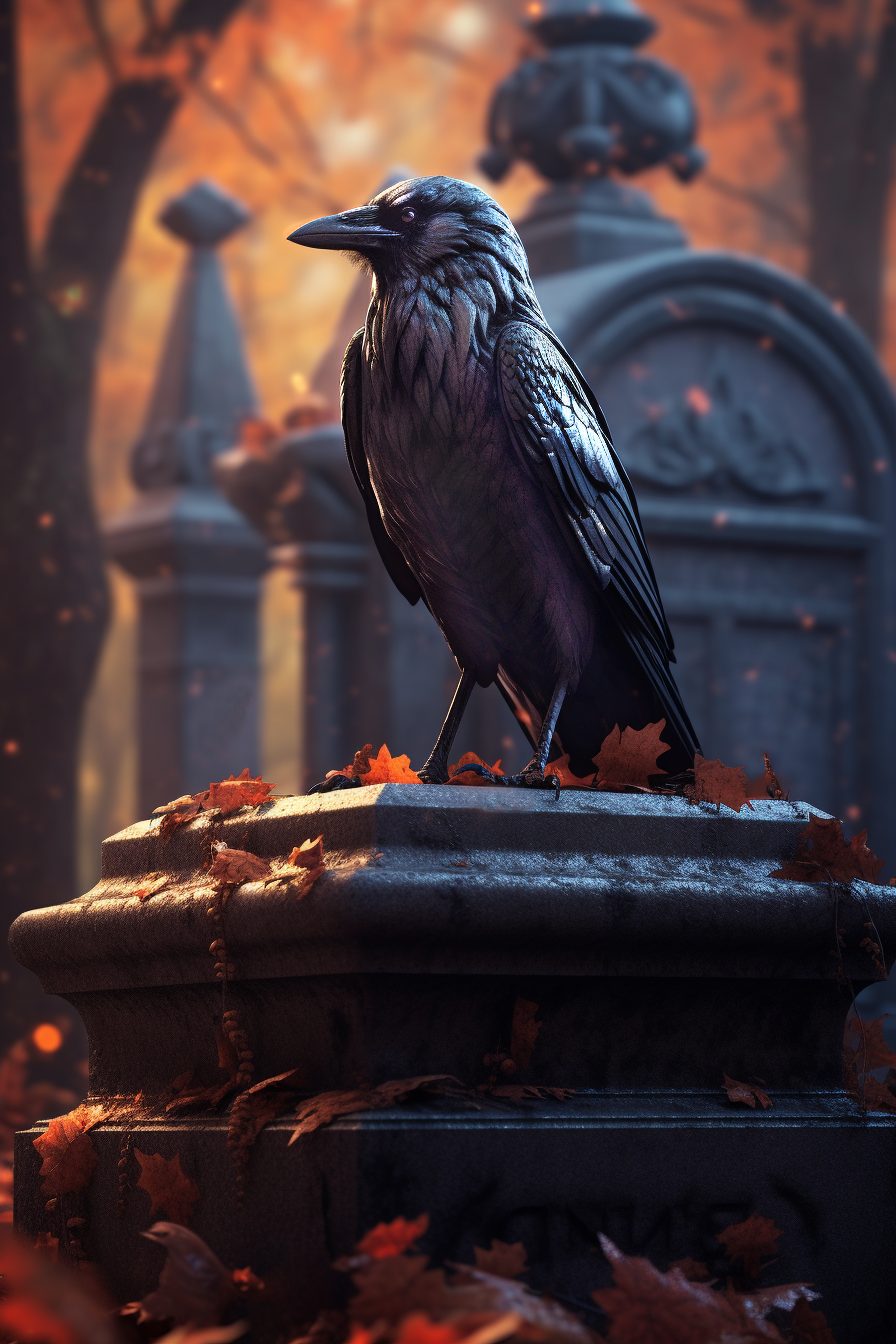
Greek mythology puts a crow in a role of conflict between the bird’s master Apollo and Apollo’s beloved Coronis. Apollo’s crow served the god of prophecy as spy and messenger, informing Apollo that Coronis was unfaithful to him—despite the maiden begging the crow not to be the bearer of bad news. Hastily, an angry Apollo killed the beautiful nymph, then right away regretted it all. He hated himself for having caused Coronis’ death, and hated the crow for having let him know about Coronis’ interest in Apollo’s rival.
The story told in Ovid’s Metamorphoses provides one origin of the crow and raven’s cultural connection to death and darkness: Apollo burns his servant bird in punishment for telling the truth that led to death, thereby turning the crow’s previously pure white feathers black forevermore.
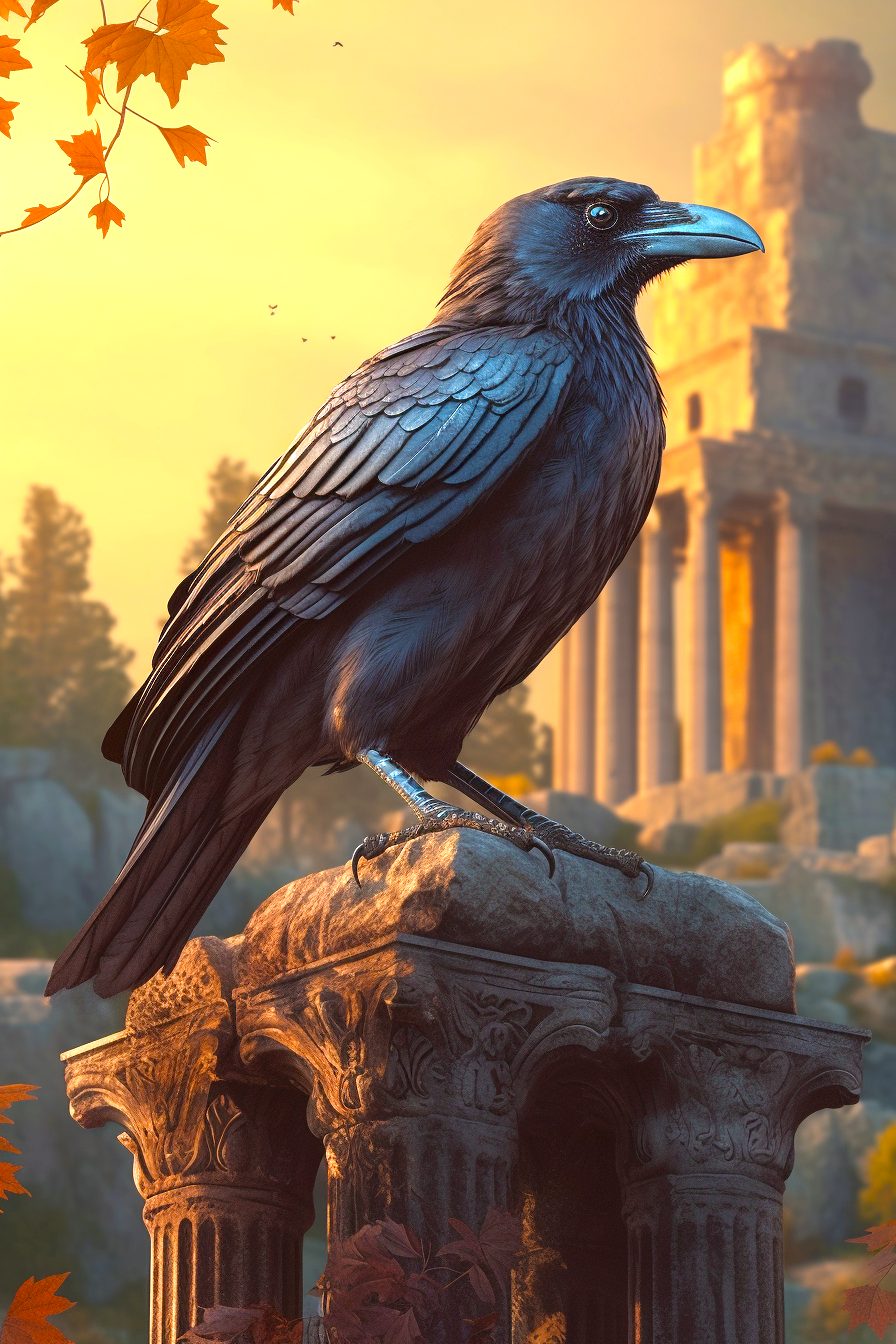
One type of crow is the most common bird in the city of Karachi, Pakistan. Here, as everywhere, the crow earns its reputation as stealer of shiny objects and eater of garbage and dead animals.
In the ancient Persian religion of Zoroastrianism, which remains today in some communities such as in Iran and in Karachi, crows and other birds who live off of carrion play an important role in relation to human death. Crows help to shorten the tension humans experience between good and bad, between life and death. A human corpse is unclean and it is common in world religions to require quick removal of the dead body from the living world. To this end, Zoroastrians built structures designated particularly for placing a corpse in the sun, walled off from living humans, and attracting crows and vultures to finish the job of dispersing death.
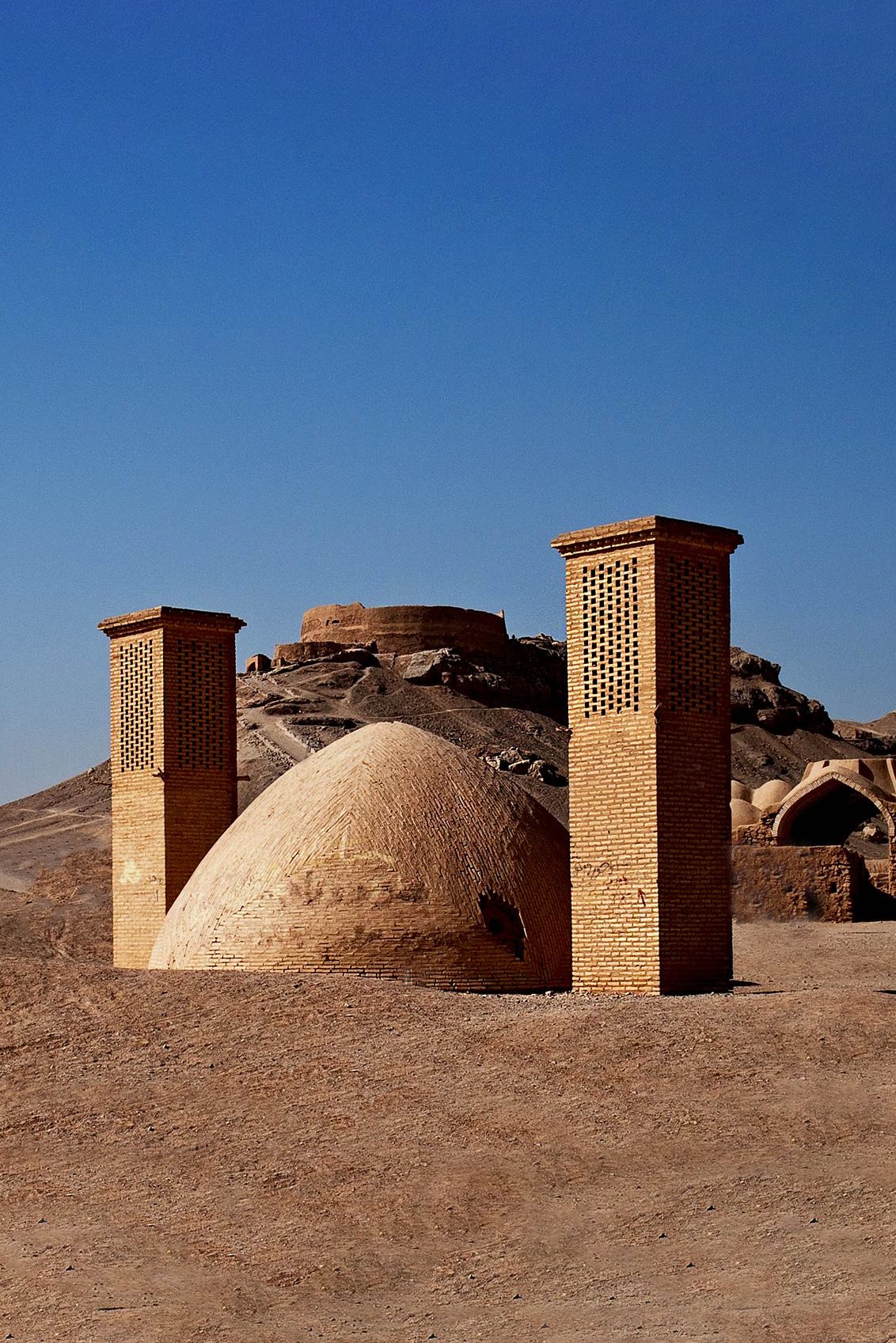
Nineteenth century American poet Emily Dickinson mentioned dozens of birds in hundreds of poems; six of her poems reference crows. In both “Fame is a fickle food” and “An Antiquated Tree” the crow is associated with uncommon insight, in contrast to the absence of wisdom in youth and its assumptions of immortality. Dickinson’s crow indirectly and a little jauntily reminds us of the closeness to each of us of approaching death. It is not a frightening realization for the poet, but rather knowing we move throughout life toward death is something to respect.
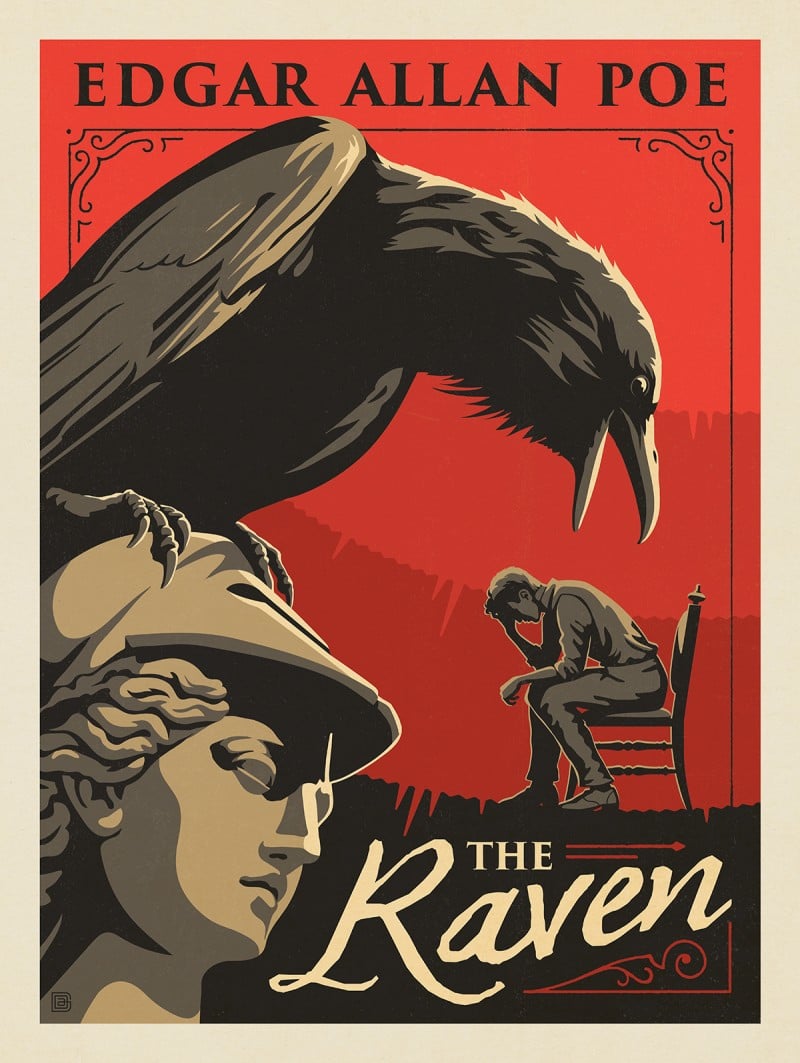
Famously, Edgar Allen Poe’s 1845 poem “The Raven” takes a more mournful and chilling approach. Poe describes the ebony bird as ominous, a prophet, and a thing of evil, because it came to do nothing but remind the narrator that his lost love was gone forever. Not foretold, death instead was retold and retold with no accompanying comfort or information.
Old Norse mythology has had a noticeable impact on contemporary cultural representations and interpretations of crow symbolism. Odin, the most powerful god, kept company with two crows (or ravens). Huginn was named for “thought” and Muninn meant “memory.” They flew all over the world every day, returning at night to tell the king-god what was going on. His black birds were also understood to be a part of the king-god. Odin’s roles as deity spanned from “father of all” to “lord of death,” which align with cultural associations of crows with dynamic life, death, and the space in between that humans want to close.
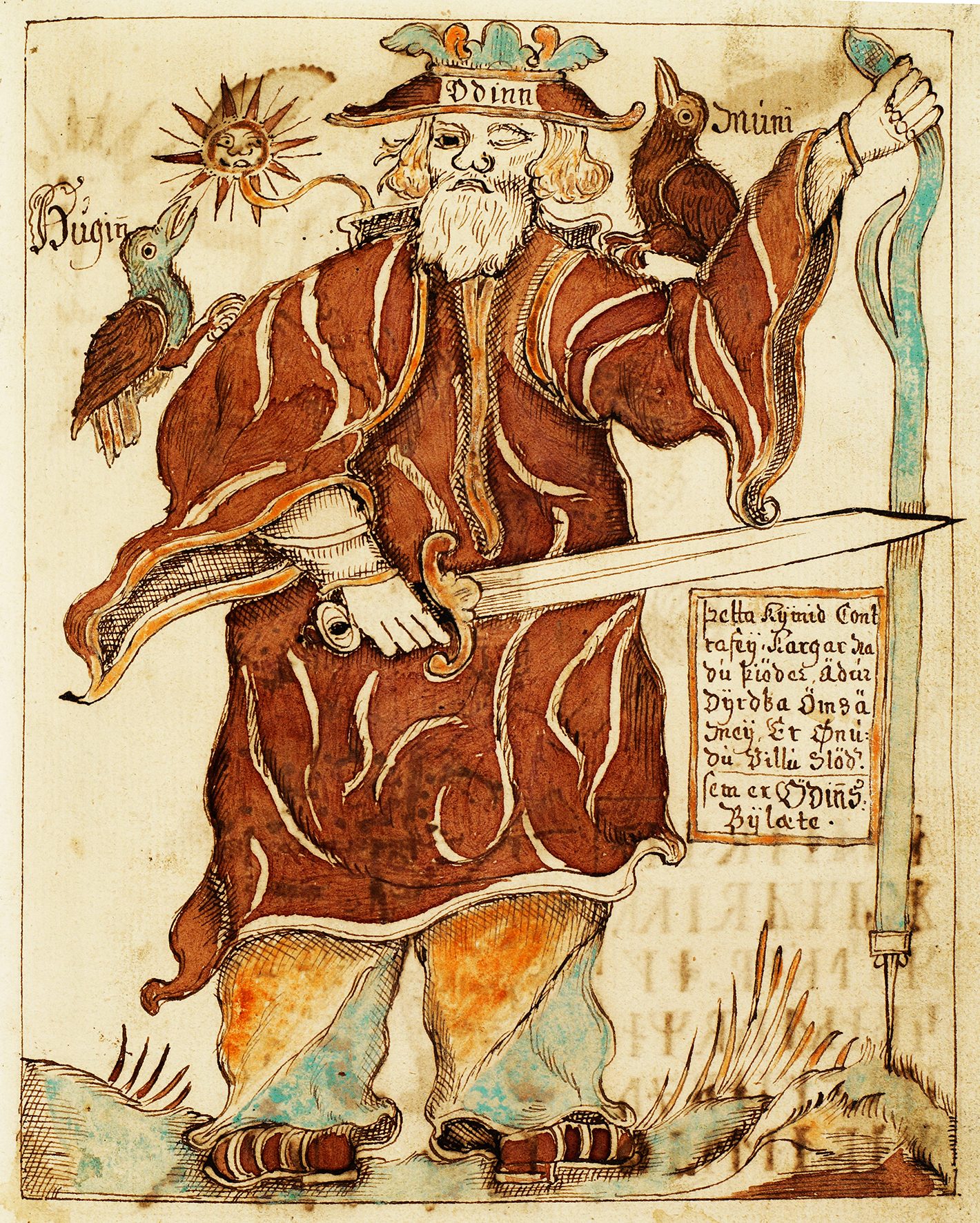
Mixed in with this cycle is the human value of knowledge and understanding, of knowing enough to act for the future and to recall lessons from the past. The shape-shifting one-eyed king with black bird messenger-memories, Three-Eyed Raven, in Game of Thrones comes from Norse and subsequent Irish and Welsh mythologies.
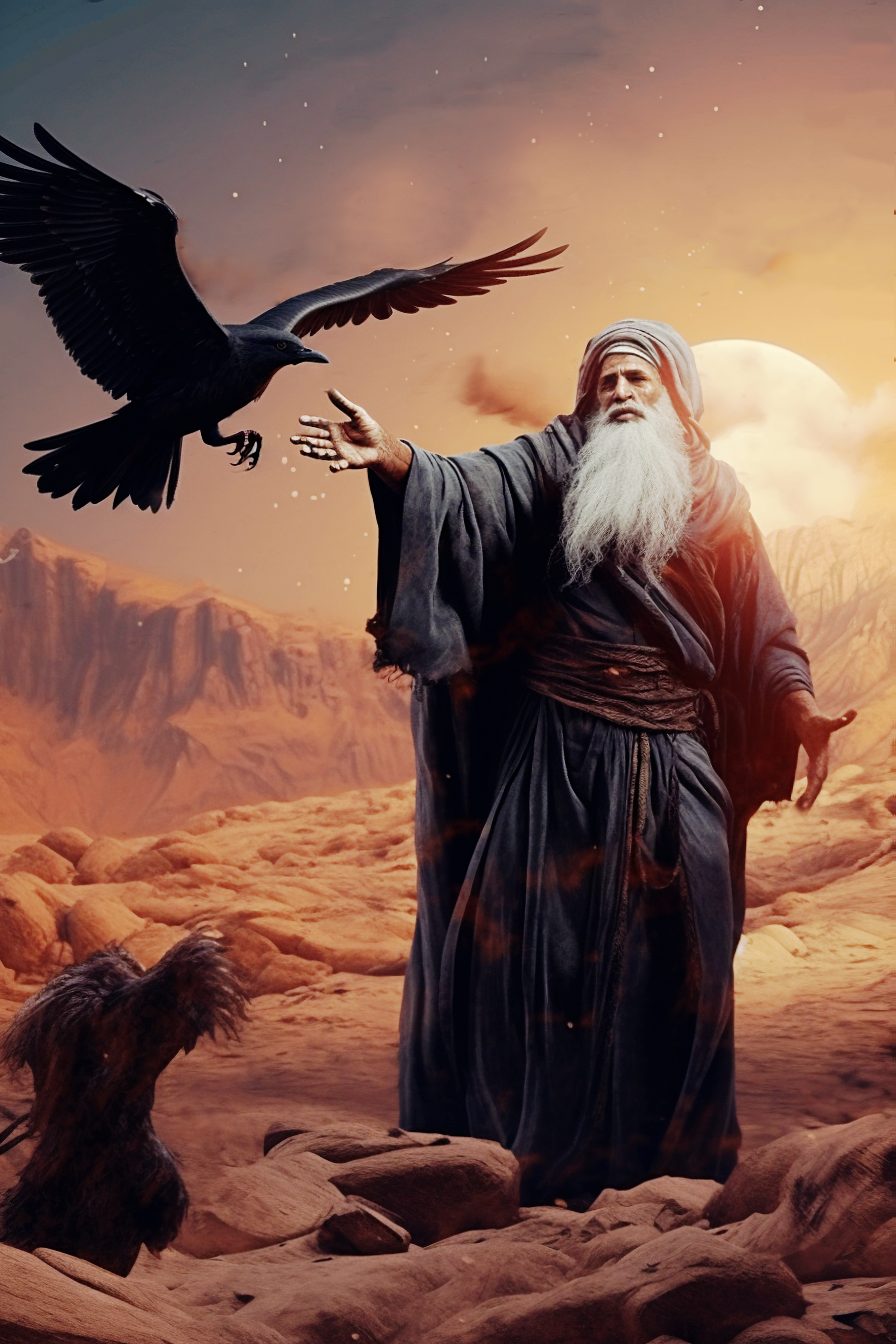
In Jewish and Christian scriptures, ravens show up in several stories, including at the end of Noah’s Flood and as providers used by God to feed the prophet Elijah in the desert. In the story of Elijah, the raven or crow serves to extend life rather than to announce imminent death. Later in the Christian New Testament, Jesus asks his followers to “Consider the ravens,” pointing out God’s provision of food for fowls and for humans alike.
The Quran includes a crow in its telling of the story of Adam’s son Cain murdering his brother Abel. Allah sent a crow to teach Cain how to bury his brother (and his disgraceful act), which brought him to a point of recognition and regret.
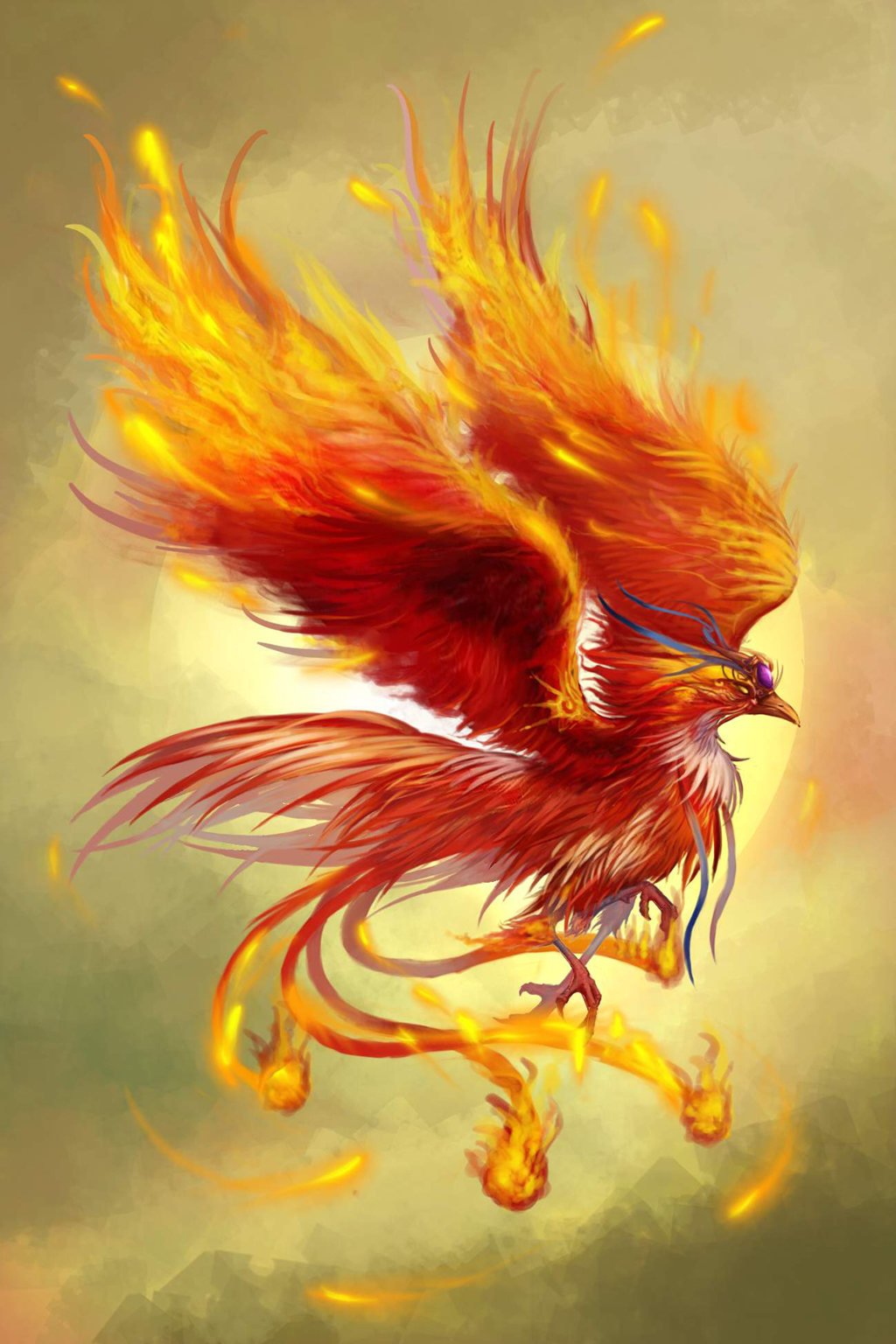
The crow in Japanese, Chinese, and Korean mythologies likewise shares a telling-the-will-of-deity function with many world cultures. The sunbird, typically a single or group of three-legged crows subordinate to a deity, is also known as golden crow and the crow sun. It travels across the sky repeatedly, fulfilling this crow’s function as illumination. In these cultures, crows may evoke hope and confidence in receiving guidance from spirits or from the earth and sky.
Several Native American and First Nations in the Pacific Northwest, including the Inuit, feature the raven in creation myths (known as the Raven Tales). (Indigenous terms translated as “raven” are alternatively translated “big crow.”)
Countering the black bird’s positive associations with creativity, the same and additional cultures associate a raven or crow with great flood stories similar to Noah’s ark. In these, the black bird fails to find dry land for the humans and is cursed as a result.
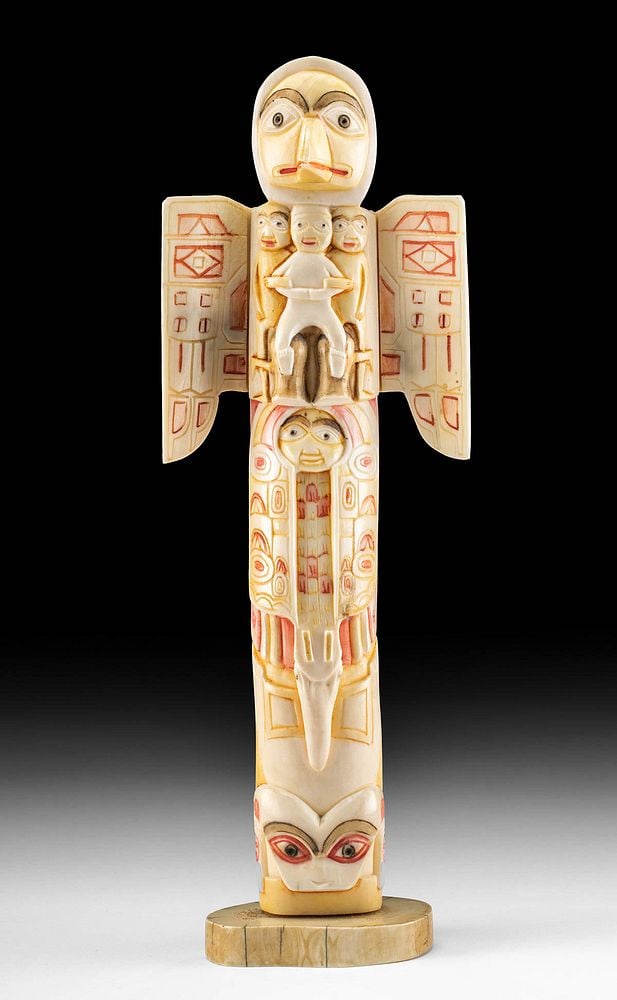
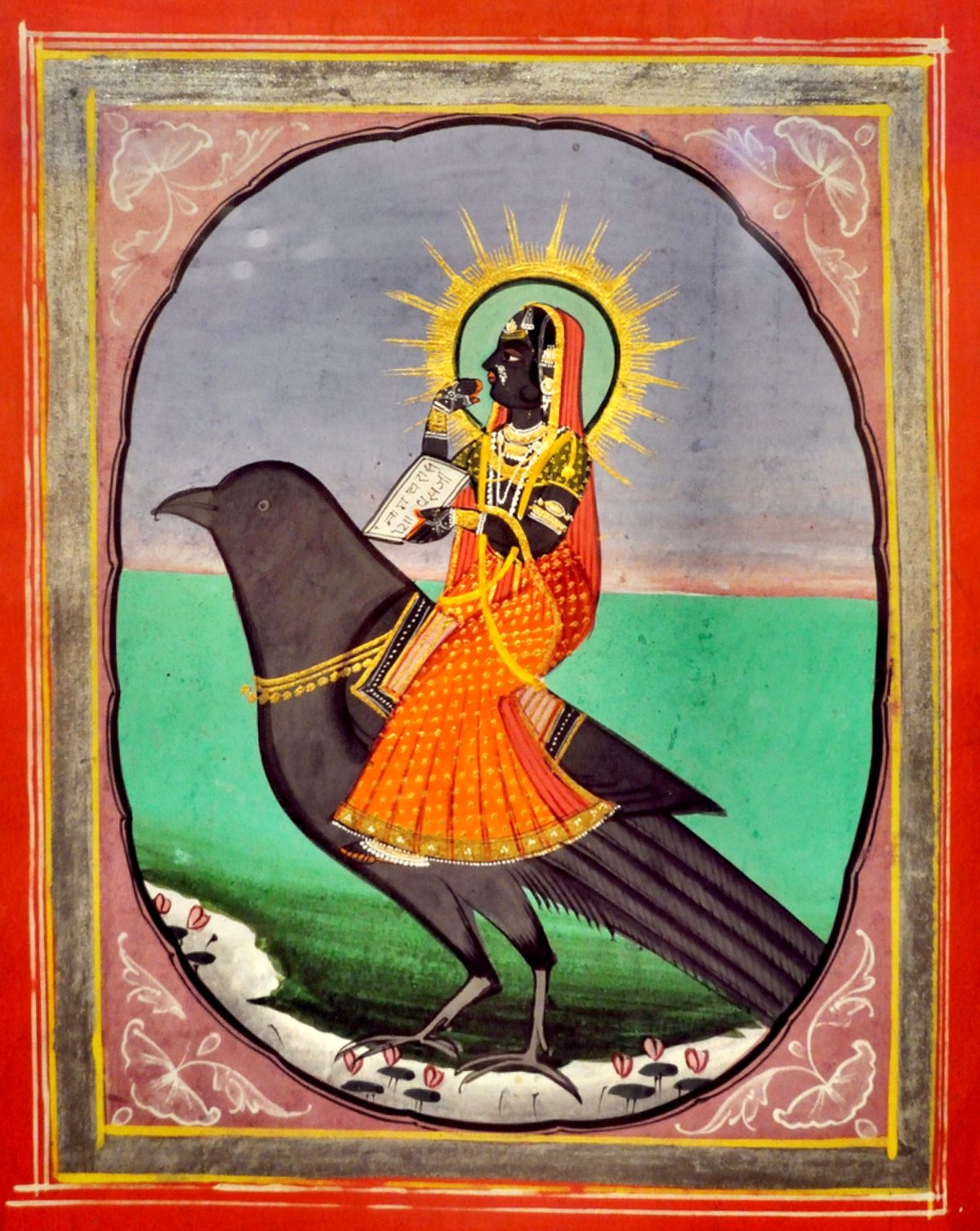
Hinduism is another religion in which the crow is connected to the creation of the world. The bird also is represented as a “seer” and provider of wisdom—similar to Odin’s two companions and the three-legged crow in Shintoism.
Crows have the reputation of being thieves globally. Related superstitions in South Asia and beyond lead people to be careful to show respect for crows through allowing the birds to feed on human properties, while keeping a safe distance. In India’s neighbor, Bhutan, the raven is the national bird. Featured in the Bhutan monarchy’s Raven Crown, which is modeled after a helmet, the shiny black bird is connected to a Buddhist and Hindu god of protection.
The story of the 1994 horror film The Crow is matched by the real life tragedy of star actor Brandon Lee’s on set death. In the movie, a young musician is resurrected by a crow to avenge his and his fiancee’s deaths. As in the Zoararastrian death tower, the crow’s role is violent mediator between life and death, or death and the afterlife.
Just a few days before filming was scheduled to be over, 28-year-old Lee was fatally shot due to prop management errors. Lingering conspiracy theories surrounding his 33-year-old father Bruce Lee’s mysterious death 20 years earlier, combined with the unlikelihood of events during Brandon Lee’s movie production, combined with the symbolism of the crow together escalated rumors that the family was cursed.
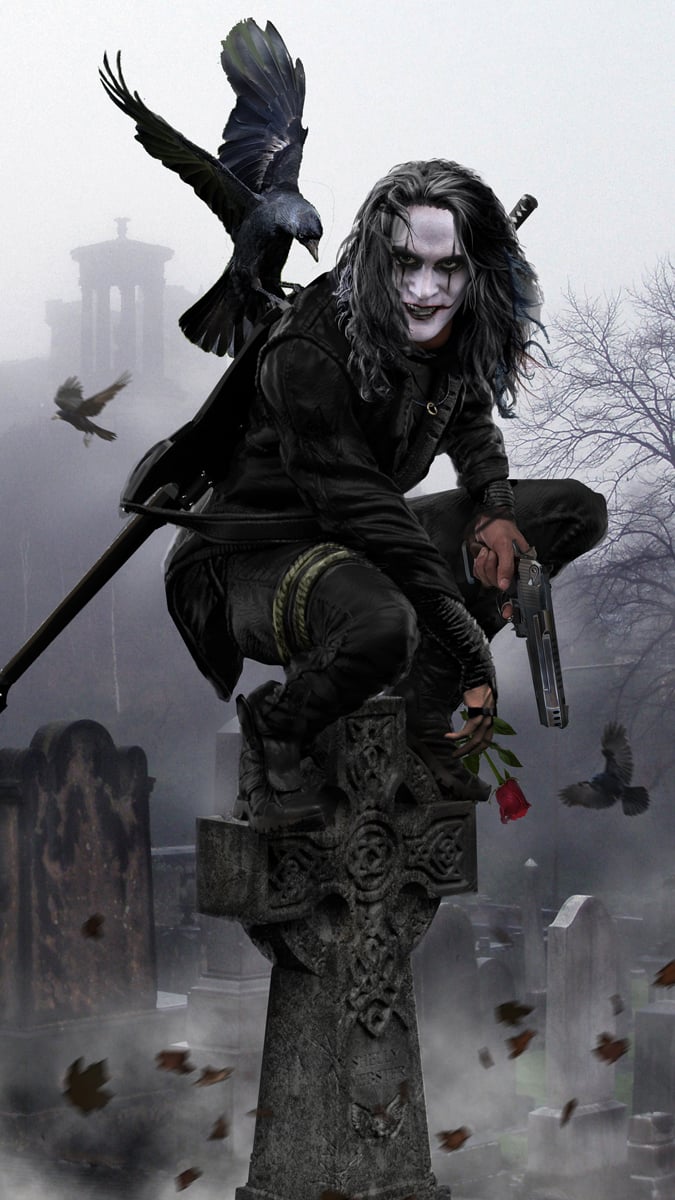
A 2019 fan-led study of bird references in heavy metal music lyrics found raven and crow to be the first and fourth “most metal” birds. Again, the symbols are predominantly associated with death, spiritual darkness, or foreboding. In the early 1990s, two lighter rock bands, The Black Crowes and Counting Crows, launched successful, persistent careers. Counting Crows crafted its name from a British nursery rhyme list how members of the corvid family—magpies in this poem—may signify good or bad. It depends on how many crows we see: one for sorrow, two for joy.
Crows don’t always signify such big ideas as death and deity. For example, using the Arabic word for “crow” in its title “El-Ghorab,” Egypt’s entertainment industry produced a TV series modeled after the American production “Ugly Betty.” The lead character is not a harbinger of bad luck, but a culturally designated unattractive young woman who succeeds despite her awkward traits—like the crow.
Popular Native American author Sherman Alexie features the crow in several of his poems, playing with various linguistic uses of the bird and the word that have developed over centuries. In his early poem “Grandmother, the title character is introduced as an “old crow of a woman,” a figure of speech that falls in with the Arabic and other cultural perspectives of crows as ugly and nagging. The crow is used in “Crow Boom” to build a figure of human manhood.
Oxford English Dictionary dates the ominous term “murder of crows” to at least the 13th century in Middle English. The etymology is unsettled, though most commonly the phrase meaning “flock of crows” is tied to the bird’s black color, harsh caw (not sweet melodic birdsong), and its role as a bird of carrion.
As with other symbolic applications of the word “crow,” origins of the phrase “as the crow flies” are not straightforwardly connected to key characteristics of the bird. Crows don’t fly in especially straight lines relative to other migrant birds, although they would travel more directly through the air than humans in a modern roadway system or even just over land with its hills and rivers. “As the crow flies” reflects a sense of purpose observed in the corvidae family that outruns so many smaller and domesticated birds in human cultural uses.
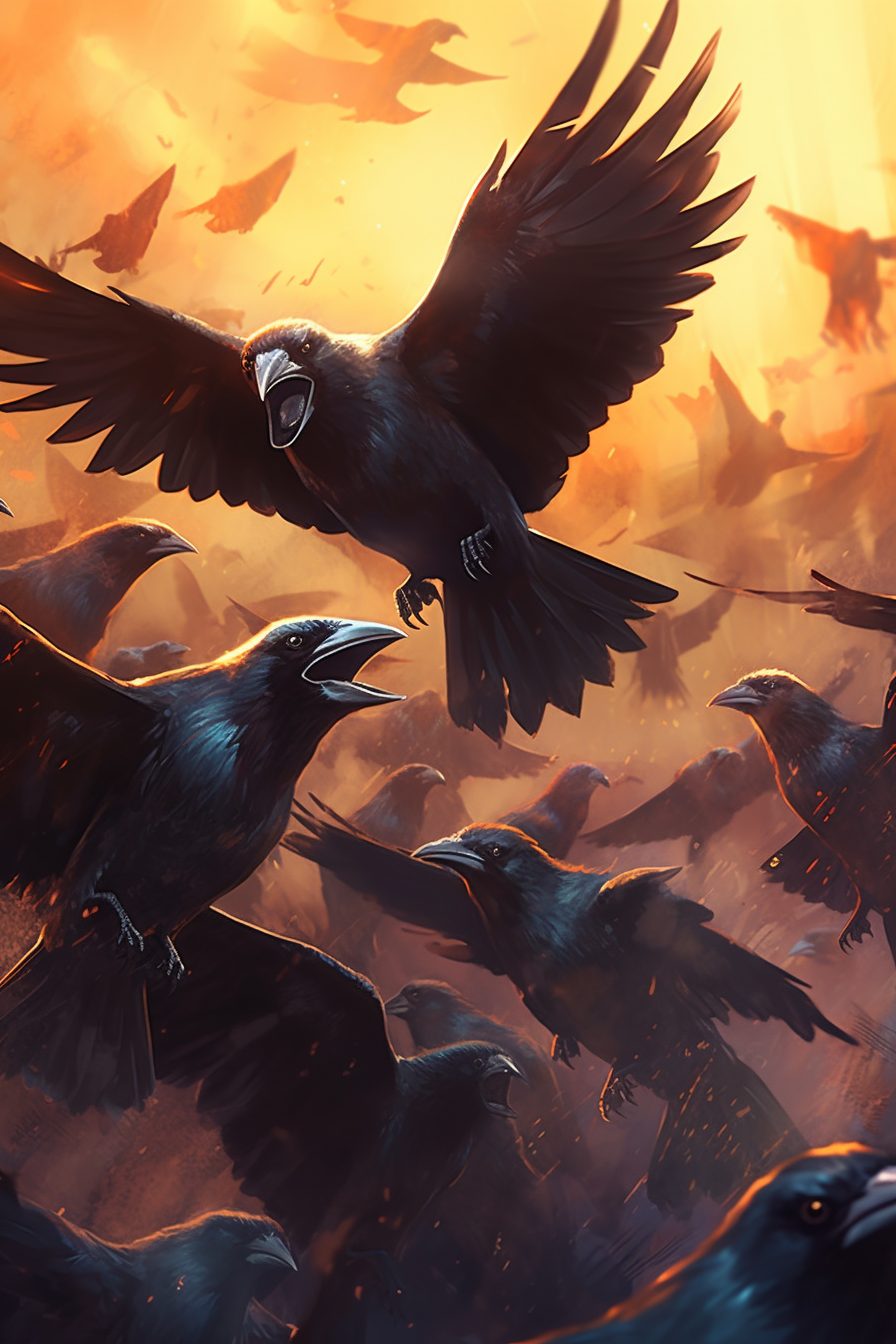
“To crow” means to boast—usually obnoxiously—about an achievement. Conversely, if someone is said to “have to eat crow,” this means a forced or humiliating apology for being proved wrong after crowing about being right.
The crow is not alone among animals in serving culture-crossing symbolic roles. Within the bird family, for example, the peacock may stand for royalty. Chickens show up in figures of speech as skittish, chaotic, even dumb.
Yet, the crow stands apart from the overarching idiom of “bird-brained,” because we have recognized members of the crow family, including ravens, as smarter than the average feathered flock. Rather than foolish or unaware like the chicken, centuries of human cultures have responded to the crow’s behaviors as clever and prophetic, and not to be disrespected. Present day bio-psychological research now demonstrates measurable intelligence and higher order social behavior in multiple crow species.
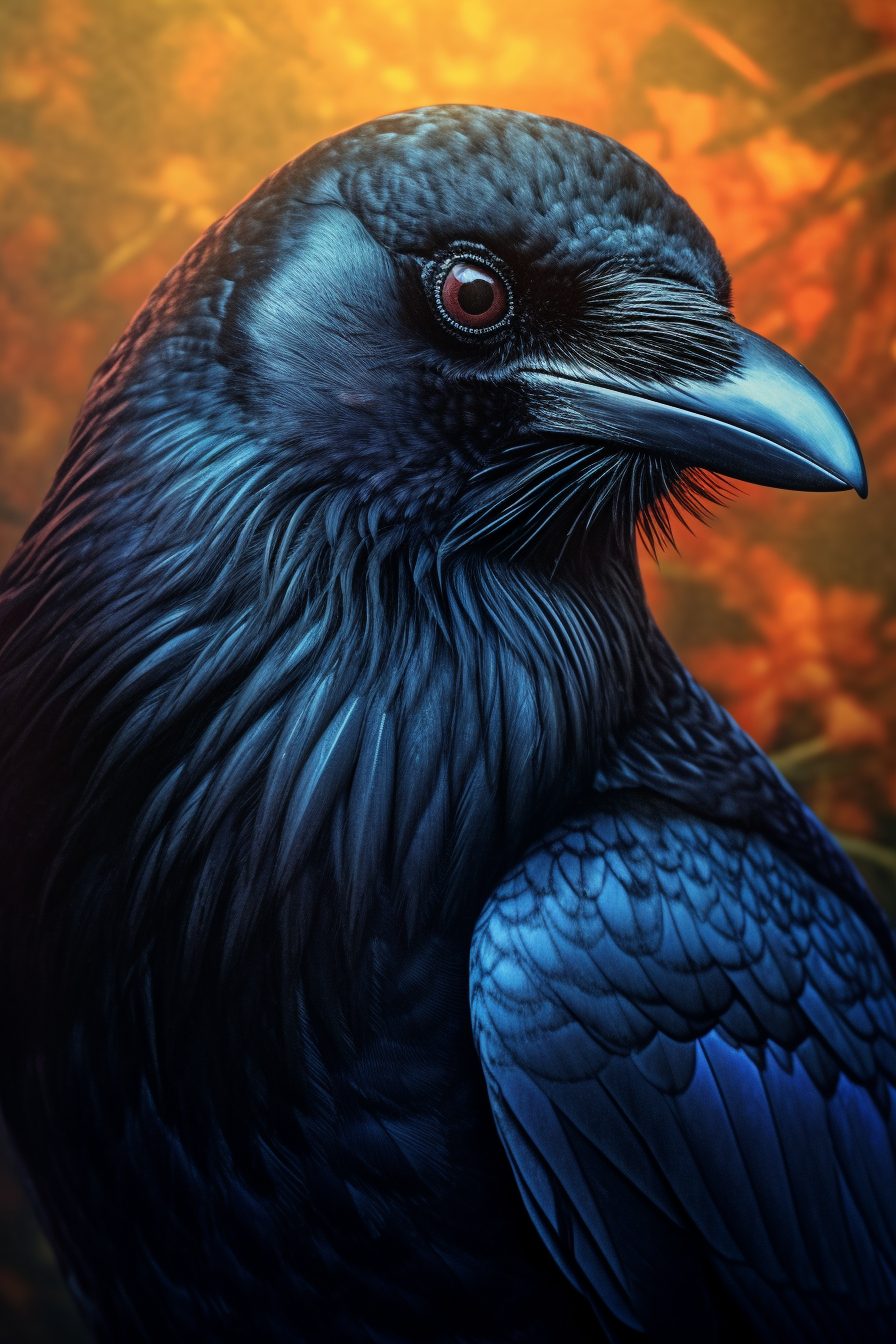
These birds also strike humans as improbably confident. In a Romanian folktale, crows are considered the ugliest birds. When God called all the birds to show their offspring and be blessed, he was so offended by the crow babies that he spat and told the mother to go find a more attractive baby. In the end, God blesses the mother and baby crows because she proudly returned and said she failed at the feat; God recognized that the crow proved every mother’s child is the most beautiful to her.
Crows can use tools, count, choose, and adjust behavior to express emotions such as grief and loyalty. Crows themselves may even think in analogies—what might a flock of humans be called by the crow?
